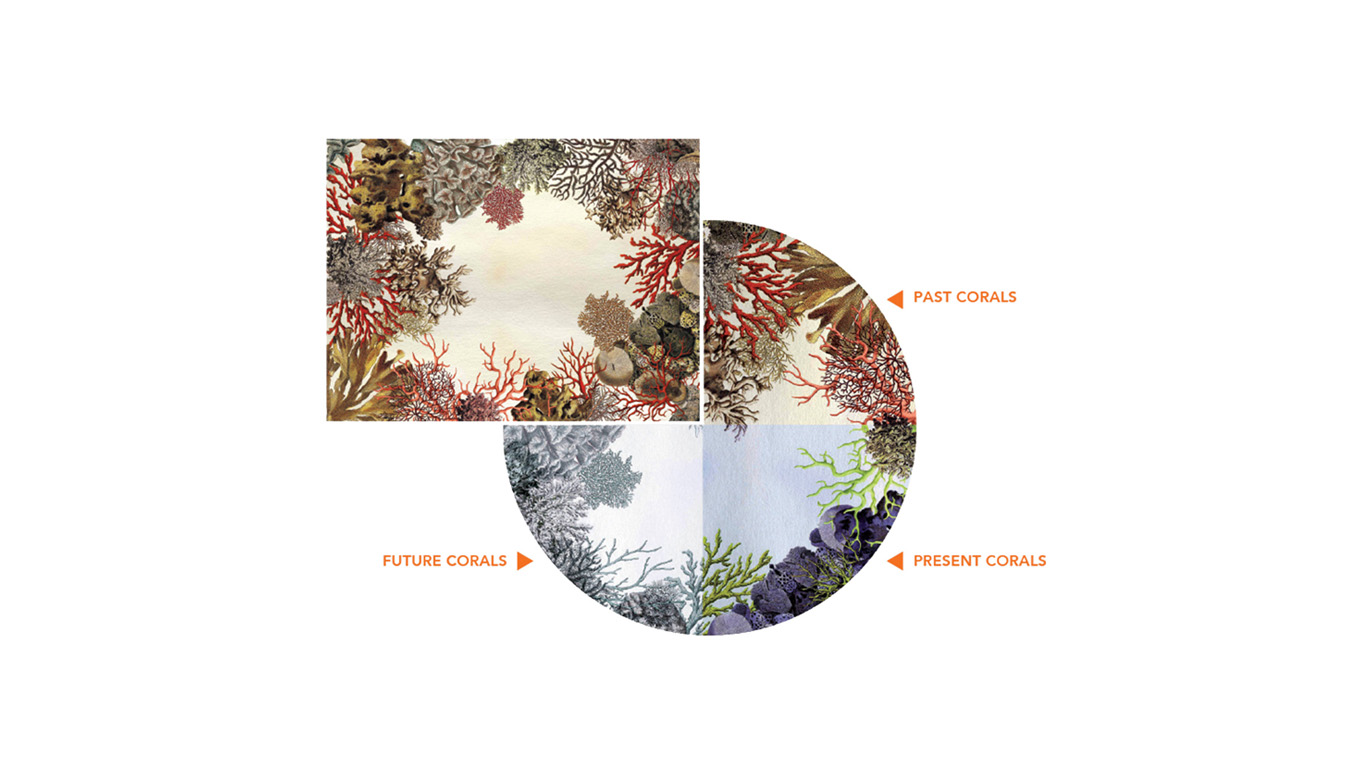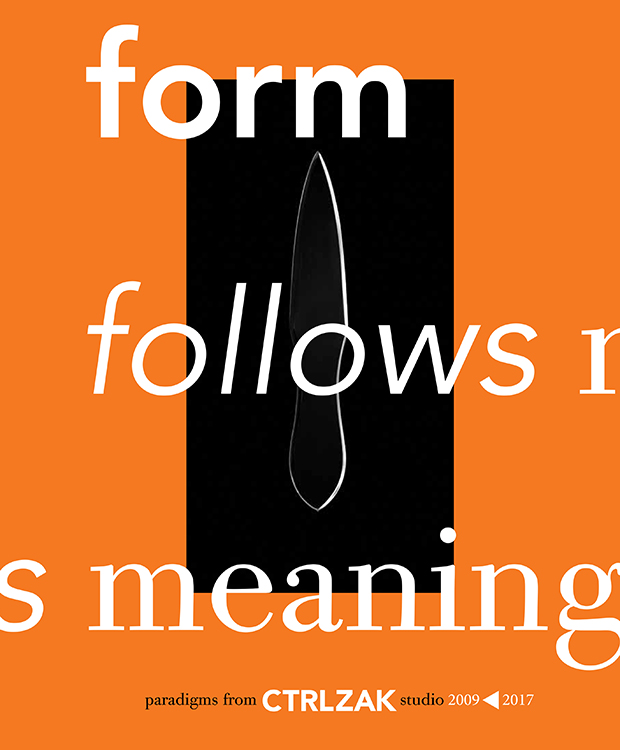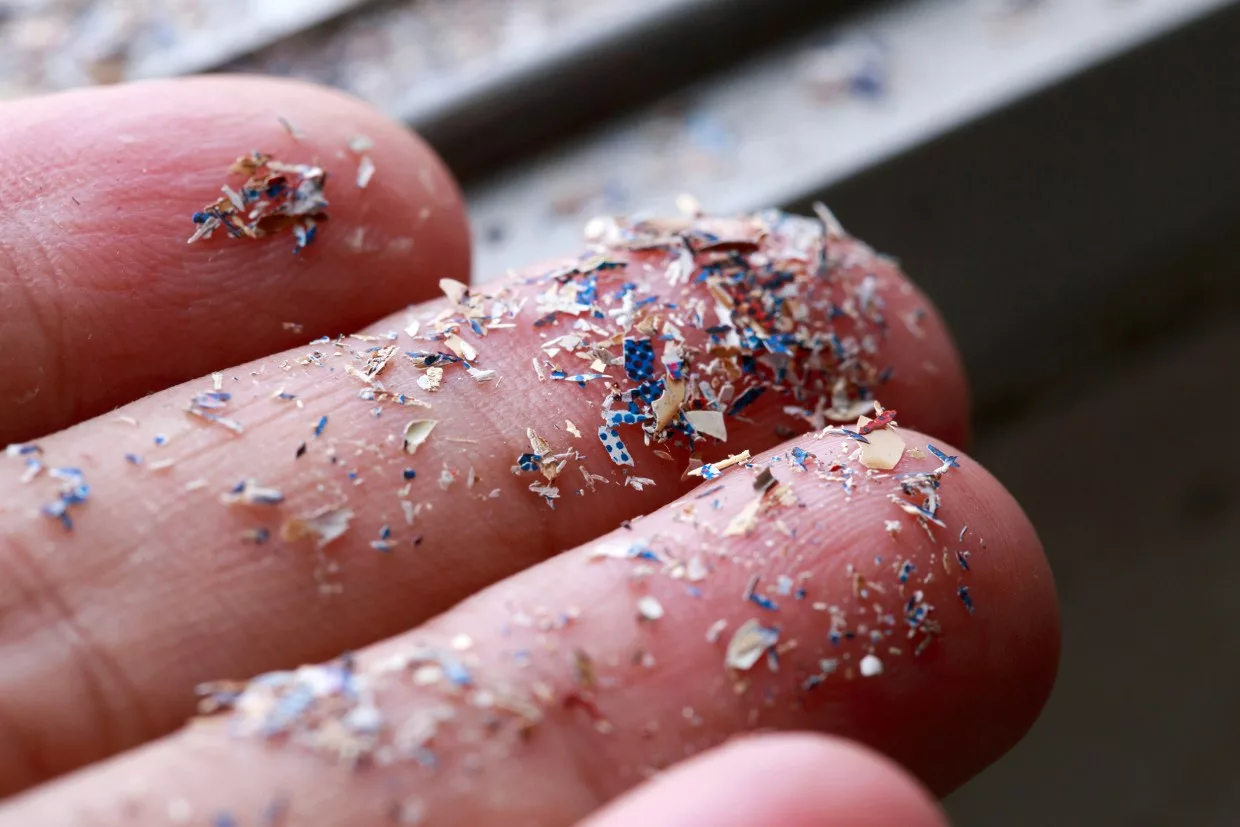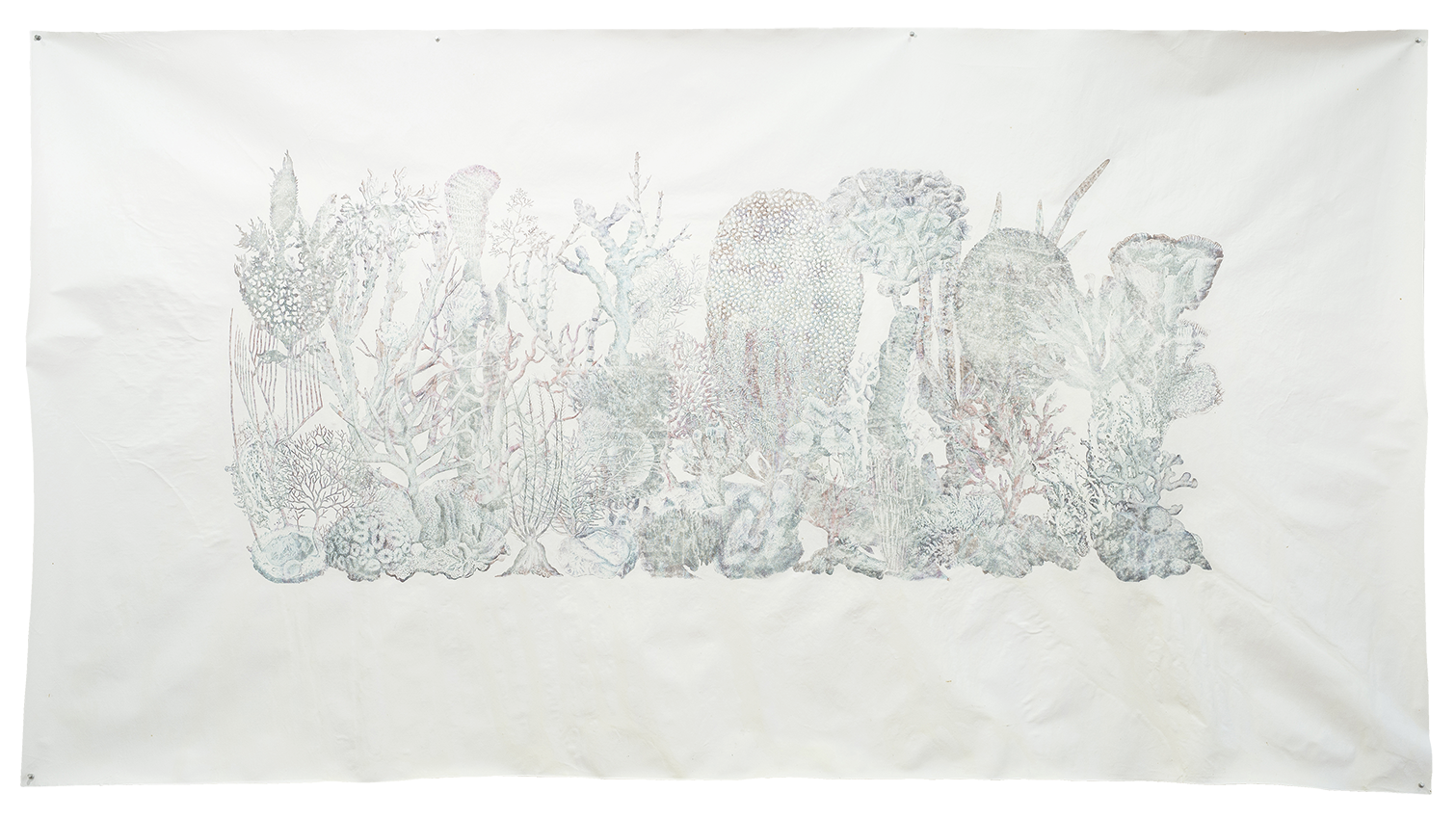Extincto
2015-2020
Extincto

A research project on the issue of species extinction and the loss of biodiversity caused by humans. Extinction by definition is the end of an organism or of a group of organisms (taxon), normally a species. Most great extinction events in the past are caused by ’normal’ evolutionary dynamics (glaciations, volcanic eruptions and other unpredictable natural events such as the collision of an asteroid) but the long course of extinctions is increasing in a frenetic rhythm not related to any past events. In the last centuries especially the phenomenon of extinction is inversely proportional to anthropogenic action (for example: deforestation, territories’ conversion in agricultural or farming areas, urbanisation, pollution, introduction of non-native species, the continuous rise of global temperature, etc.). Discover more about our research here.

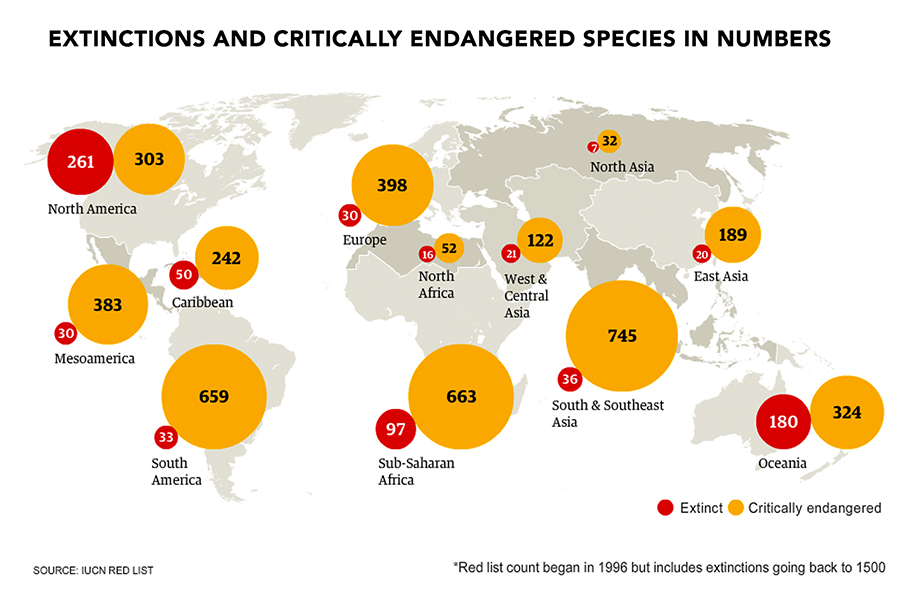
Research on Extinction
The reckless and indiscriminate abuse of earth by mankind has altered the balance of the flora and fauna, threatening the planet’s ecosystems. It is thus only logical that biologists talk about a Mass 6th Extinction (defined also as “anthropogenic”) that soon may reset life as we know it on this planet. Since it is difficult to understand the extent of this problem, based only on scientific data, CTRLZAK studio decided to use alternative modes of expression -art and design- to bring awareness to the public regarding this phenomenon. (right : IUCN Red List‘s world map on extinction)
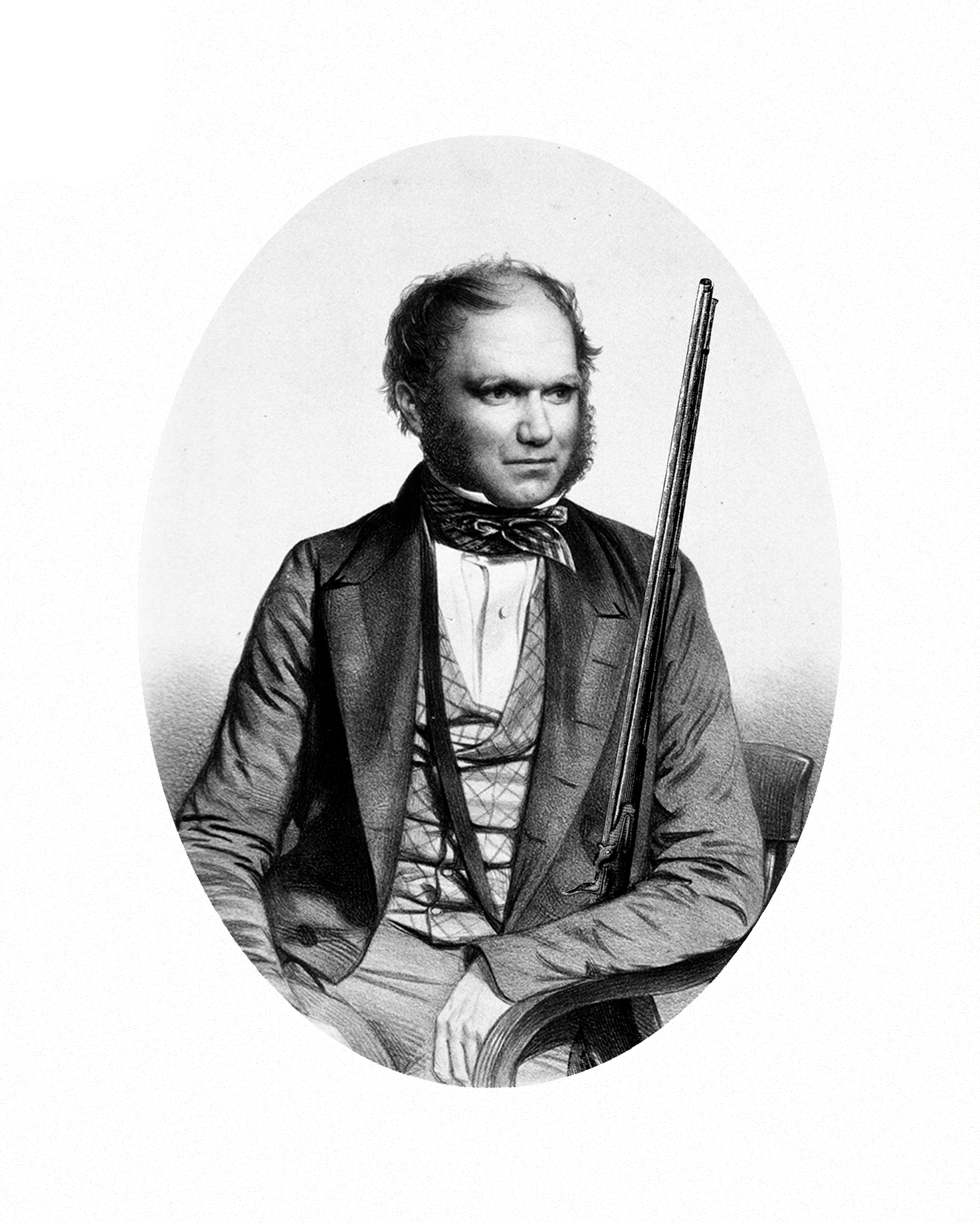

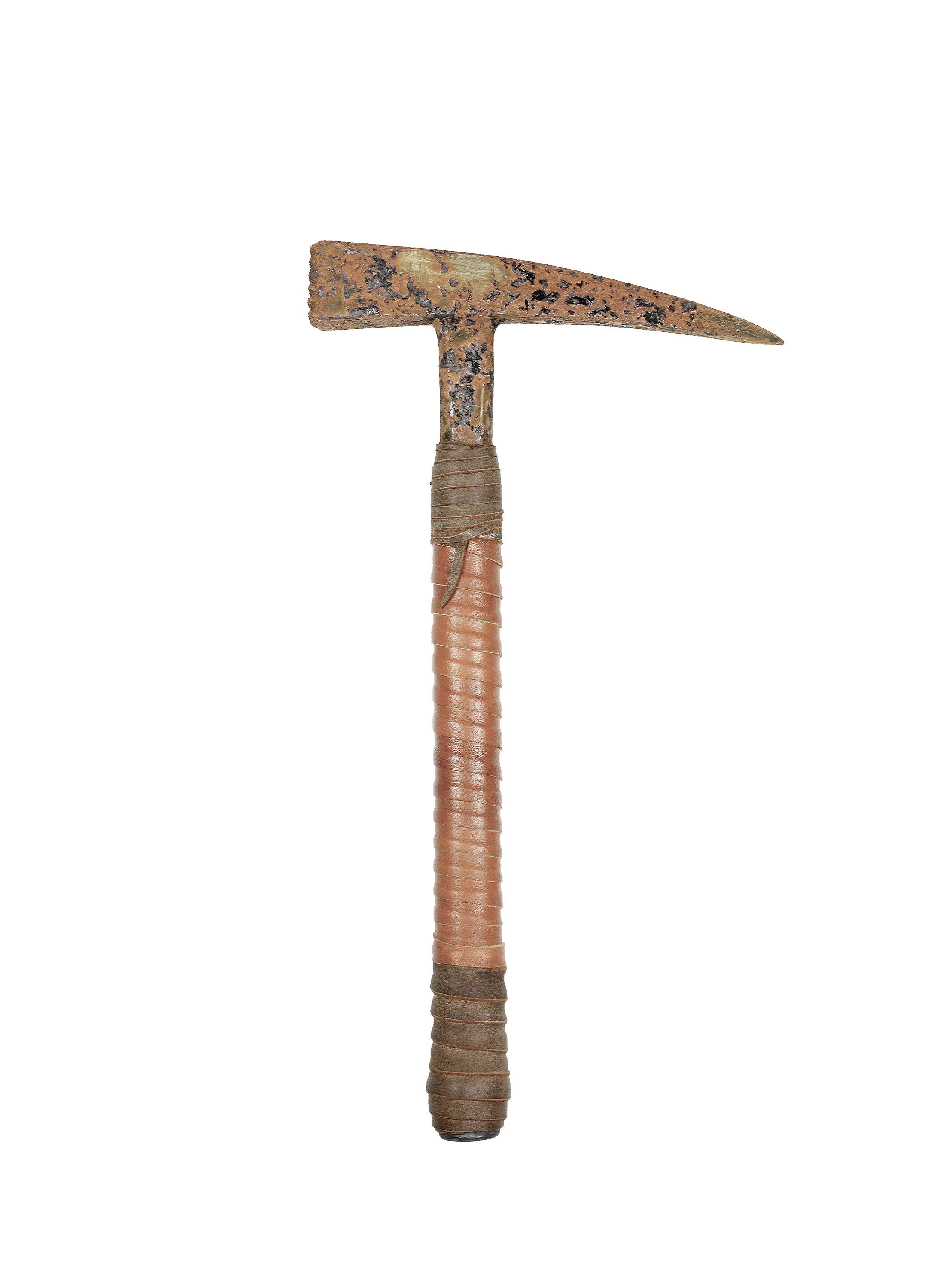
First Artifacts | Initial Reflections
Following the meticulous research a series of interventions and heterogeneous elements were created that introduce the viewer to certain paradigms of extinction caused by humans. A number of emblematic cases were analysed and presented in the forms of artworks or objects showing us how species have in many cases vanished as a result of human intervention in diverse ways. EXTINCTO wants to become a moment of encounter and a point of reflection on the problem of species extinction and its possible repercussions in the near future as well as the role of humankind on earth, here and now.
The Perfect Knife | 2014
A knife is an object that since the beginning of human existence was used as a weapon and in most cases was associated with the procurement of food. Nowadays knives are mainly used in the kitchen environment where there is still a strong association with the element of slaughter, even though people tend to forget that. This project alters the primary function of a standardised object creating instead an object of reflection. This ‘Perfect Knife’ is an object which cuts, perforates and injures the flesh of both the ‘prey’ and the ‘predator’. The sharp edge is everywhere around the rim of the knife while its flat shape obliges the user to hold it in a manner which assures his own injury. A perfect form of an archetypal knife, which embodies the forms of all knives in one. A responsible object which in order to be used requires courage and awareness. The question though is whether we are ready to take in our hands such a ‘dysfunctional’ object.


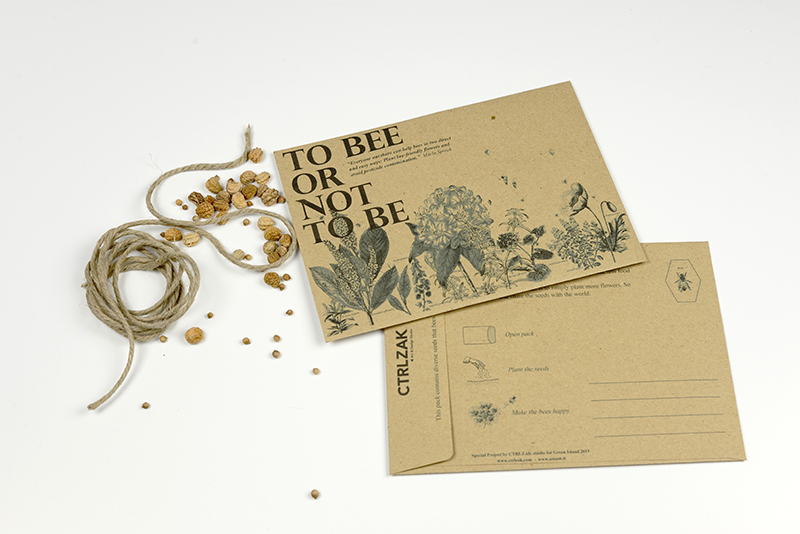

To Bee Or Not To Be | 2015
CTRLZAK was initially asked by the Green Island initiative to design an urban beehive, but after an extensive research on the subject it was obvious that such an object was not the first priority. Instead emphasis was placed on communicating to the world the important role bees play in our everyday life. This realisation gave birth to two graphic artworks that present the bees’ life cycle, their habitat and above all the role they play on pollination and eventually our own survival on planet Earth. Inside this context a toolkit was also designed that contained an informative booklet on the world of bees, a selection of seeds from their favourite flowers and a wooden sling that promotes seed planting in a playful/guerrilla mode (by launching soil pellets rich in seeds). These and more tools are included into the wooden box which once emptied can also be hung on a tree and serve as a rudimental beehive. Finally in order to spread the message even further, a series of postcards containing diverse flower seeds (preferred by bees and in this case suited to a temperate climate) were sent and distributed around Europe. A symbolic project/call to action to help bees survival that promotes a few simple gestures: avoid the use of chemical pesticides and plant more and diverse flowers. Because as Albert Einstein put it: “If the bees disappear from the surface of the earth, man would have no more than four years to live”.
Extincto Flag | 2016
Presented as part of the White Flag exhibition, curated by Triennale di Milano during the 2016 London Design Biennale, the flag was made using a fire-branded Extinction symbol on white animal skin. Italian designers have been asked to design a white flag, filling it with symbols, signs and meaning to convey the value of a contemporary metaphor of utopia, according to the curators: not a form of construction, but rather an act of deconstruction. 20 flags will be planted on a suitably redesigned map of the world: flags fluttering and moving in the breeze.

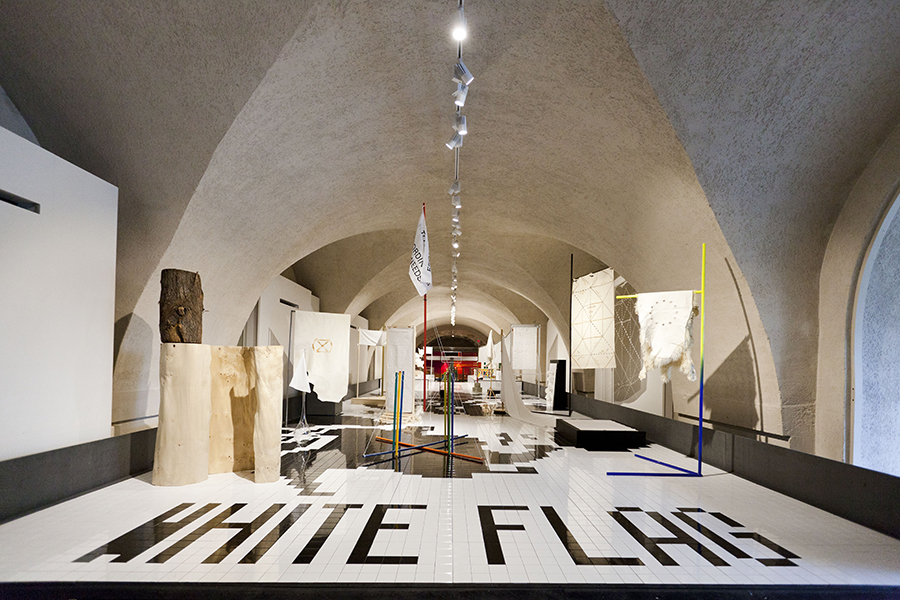
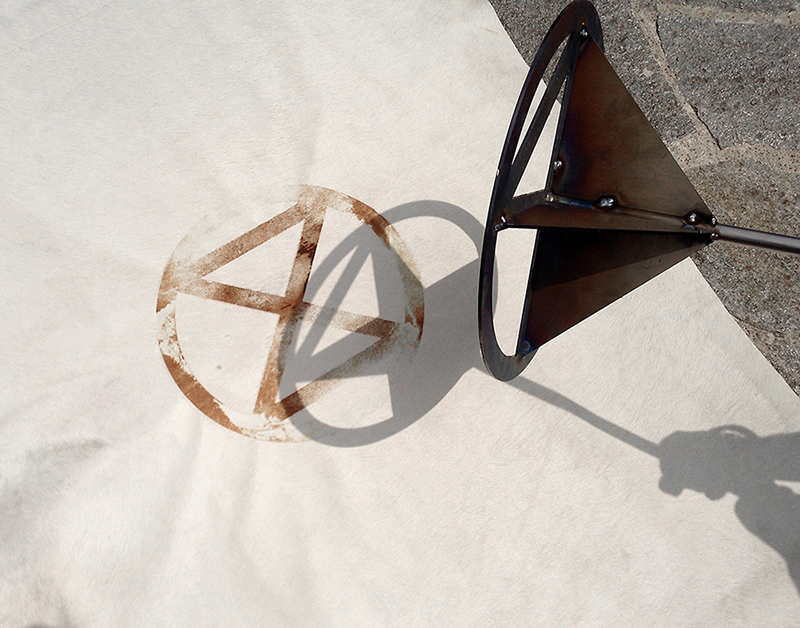
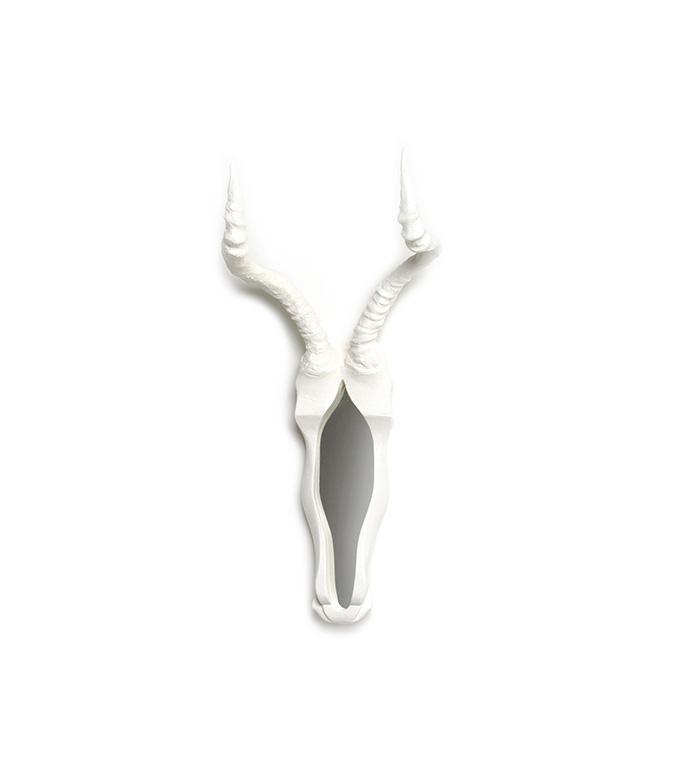

Fendo Mirrors for MOGG | 2016
Modern extinction rates of vertebrates have increased dramatically in the last 500 years and the main cause for this is none other than man himself, directly or indirectly. The basis of this project are two mammals that could still be found in large numbers in Africa a few centuries ago but were hunted to extinction by humans: the Bluebuck (Hippotragus Leucophaeus) and the Bubal hartebeest (Alcelaphus buselaphus buselaphus). The Fendo project takes the form of two sculptural objects that replicate the shape of the animals’ heads and characteristic horns, while a mirror is placed where the animal’s face would originally be, reflecting the faces of the people looking into it. The humans complete the work with their own faces creating thus a new creature which is at the same time the hunter and the hunted. Fendo are hybrid objects that reflect our past and give a glimpse to our future when we will inevitably become the victims of our own actions.

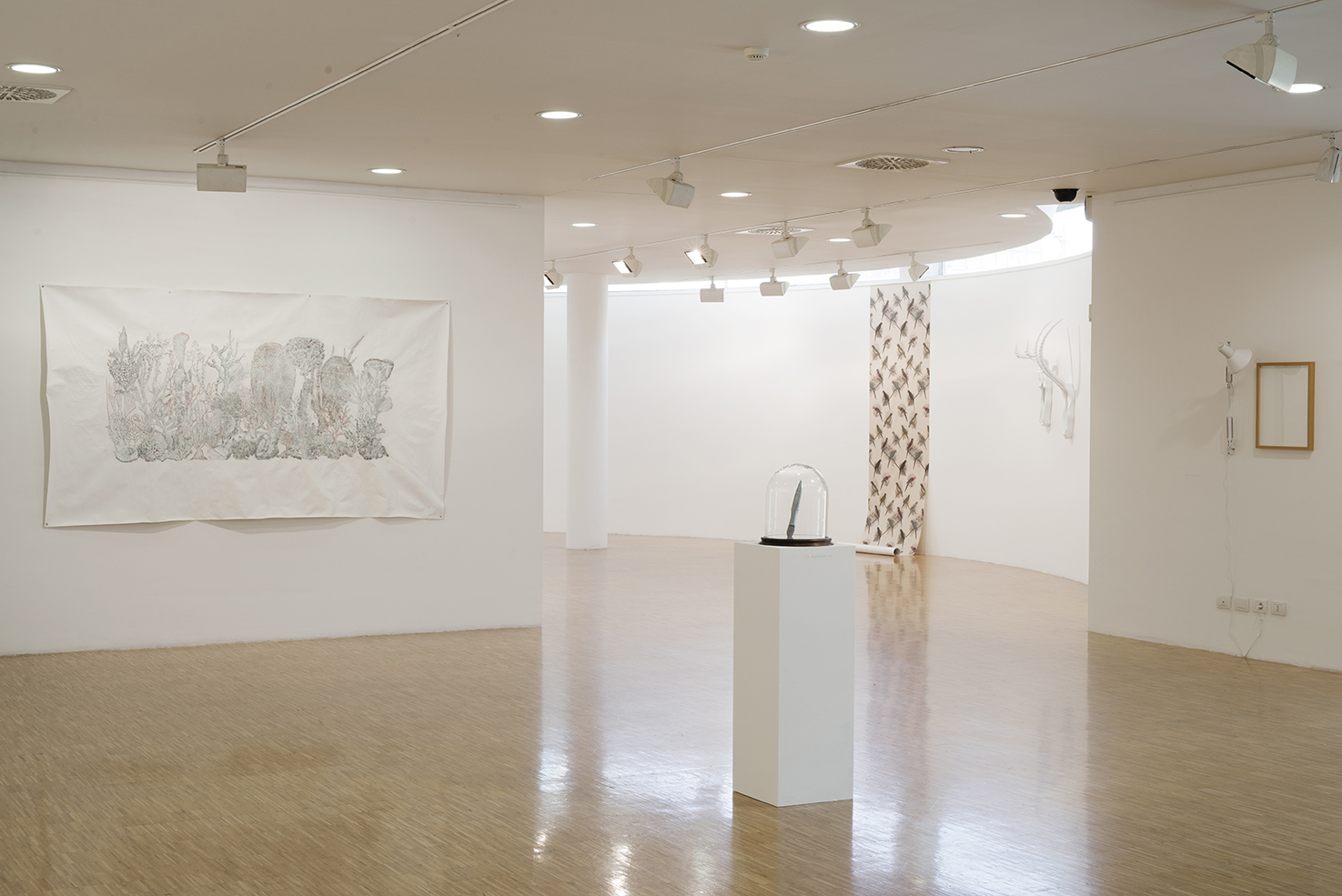
Paradigms of the Anthropocene | 2017
Presented at the Museum of Contemporary Art of Lissone, the exhibition is developed in a series of interventions and heterogeneous elements that introduce the spectator to certain paradigms of extinction caused by humans. Through careful research, some emblematic cases were analysed showing us how species have weakened and in many cases vanished altogether as a result of human intervention in diverse ways. In the exhibition are present artworks and objects of everyday use but also symbolic objects.
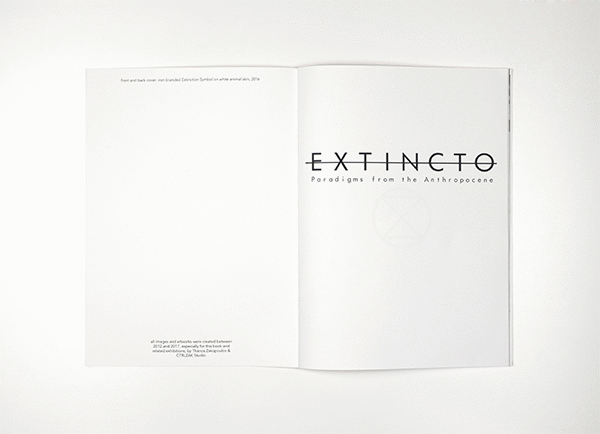

Book of Paradigms | 2017
A 1998 poll conducted by the American Museum of Natural History found that seventy percent of biologists believe that we are in the midst of an anthropogenic extinction. Numerous scientific studies — such as a 2004 report published in Nature, and papers authored by the 10,000 scientists who contribute to the IUCN’s annual Red List of threatened species — have since reinforced this conviction. Published along the EXTINCTO: Paradigms from the Anthropocene exhibition, the book contains a selection of the studio’s works regarding modern extinction.
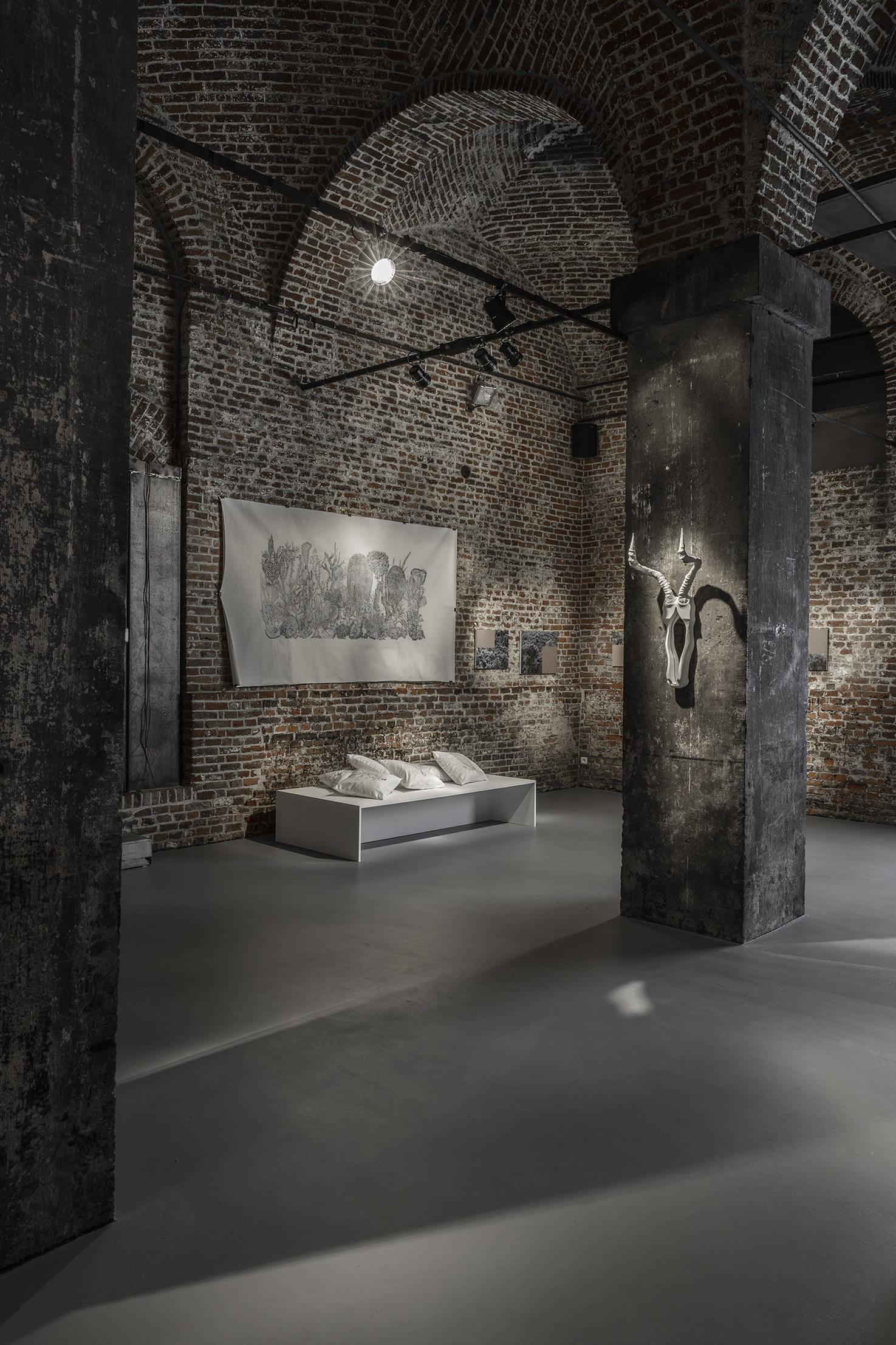

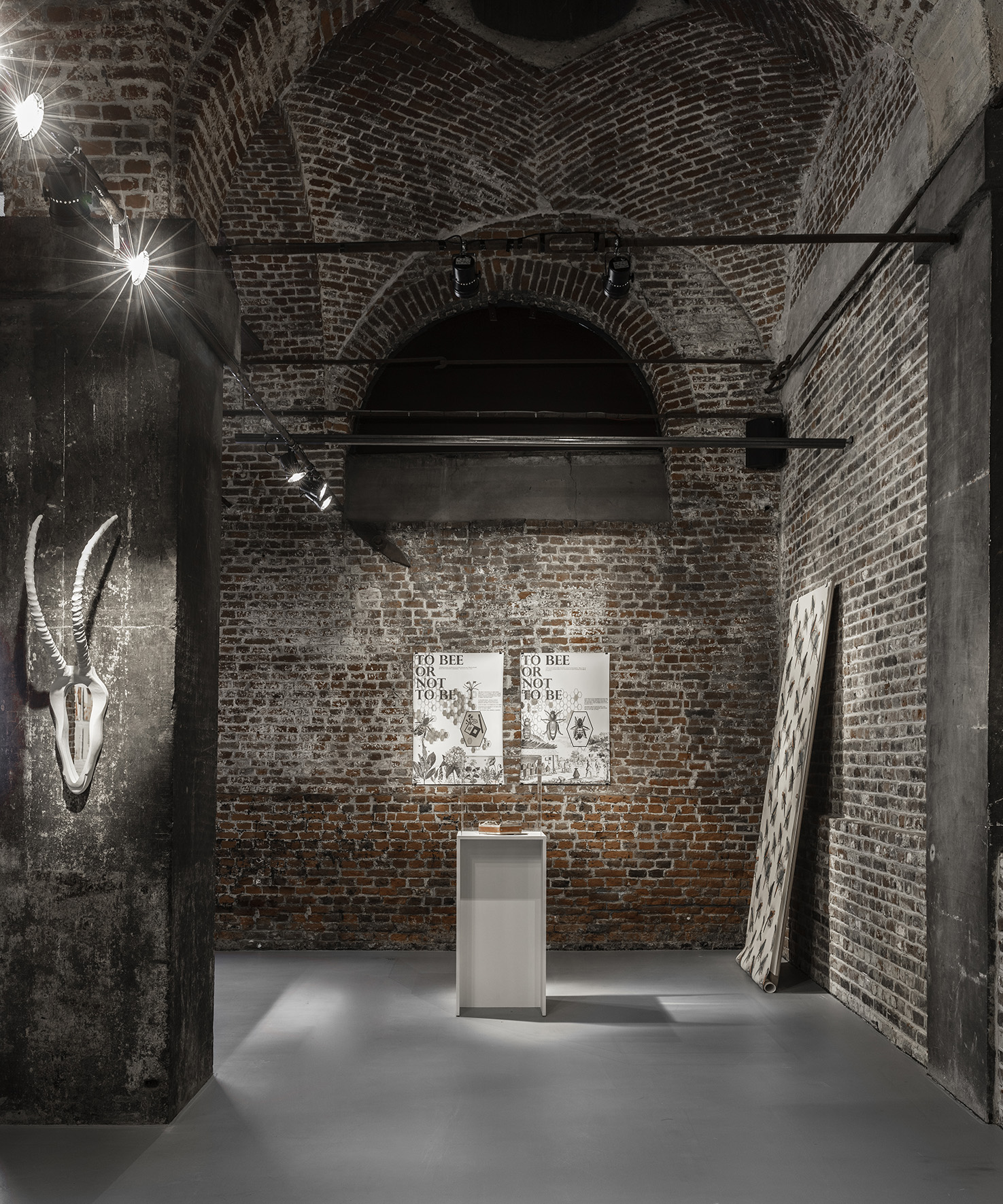
The Limits to Growth | 2018
Some pieces were also presented during ‘The Limits To Growth’ exhibition at the Centre for Innovation and Design (CID) Grand Hornu in Boussu, Belgium. The exhibition begins by presenting several critical works by artists who point out, often humorously, the failings of the dominant system to which they nevertheless belong. Six lines of reflection then propose alternatives for more sustainable design: deliberate simplicity, recycling, local production, low-tech, fighting against programmed obsolescence and the arrival of new economic models. Whilst no approach is perfect or satisfactory, each one has the merit of raising awareness and showing that it is possible to think about design in another way.
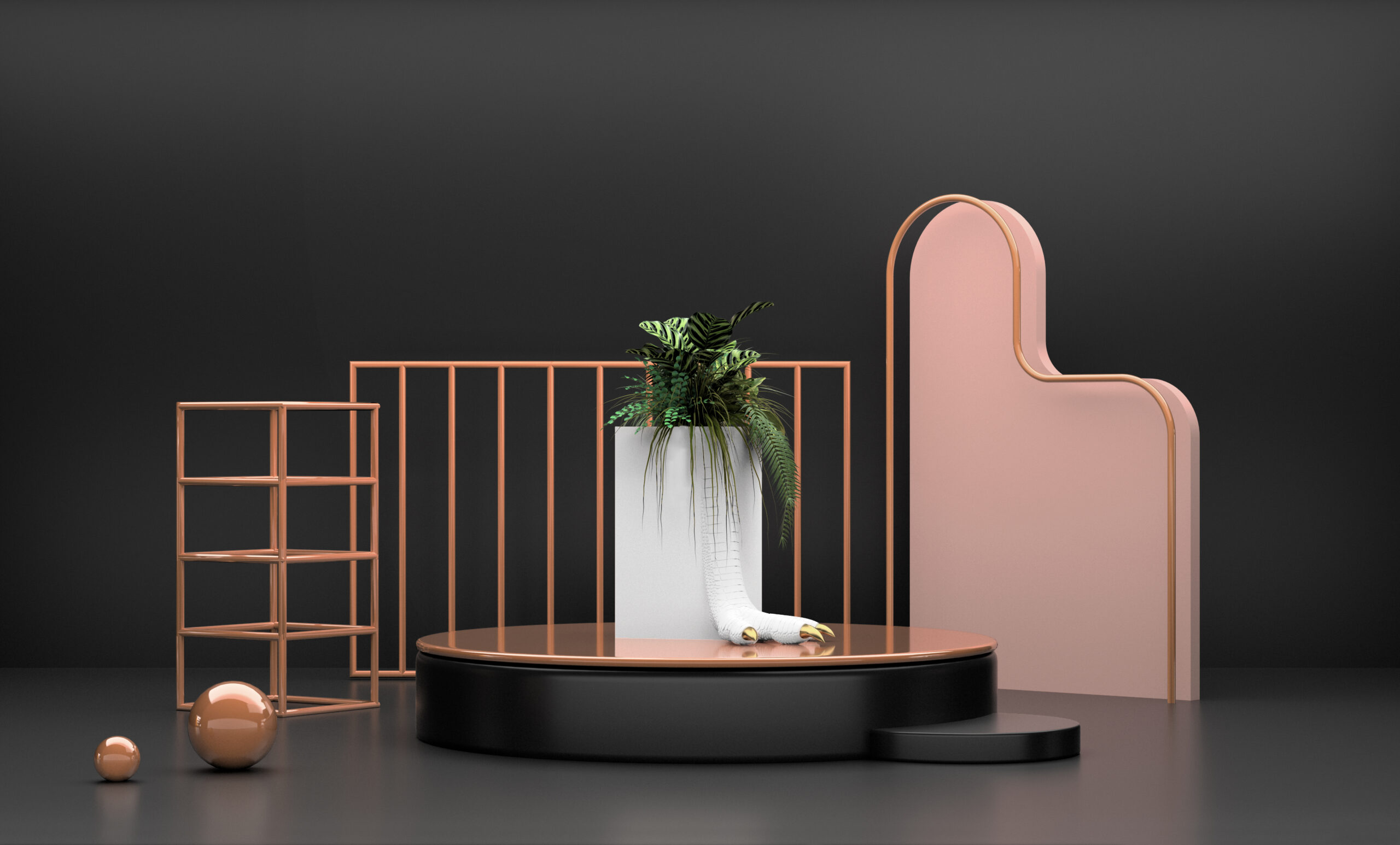
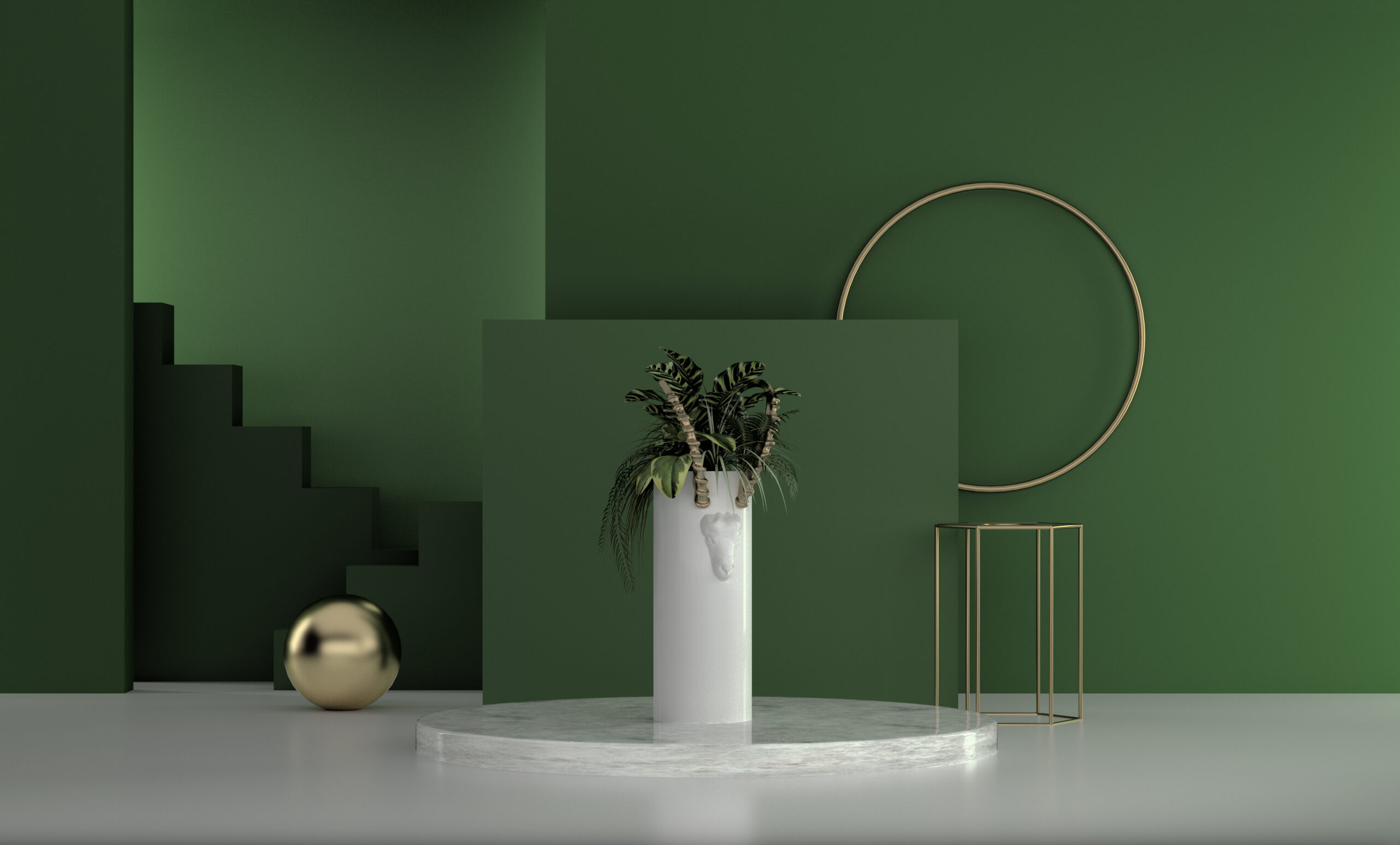
Bucardo & Moa Planters | 2019
A series of volumes pays homage to some extinct species due to human action. Ironically, we find ourselves living with these relics of which we have decided our destiny. A geometric block captures an anatomical detail that emerges in sharp contrast with the surface of the volume. Contemporary trophies that make us also reflect on our own fate.
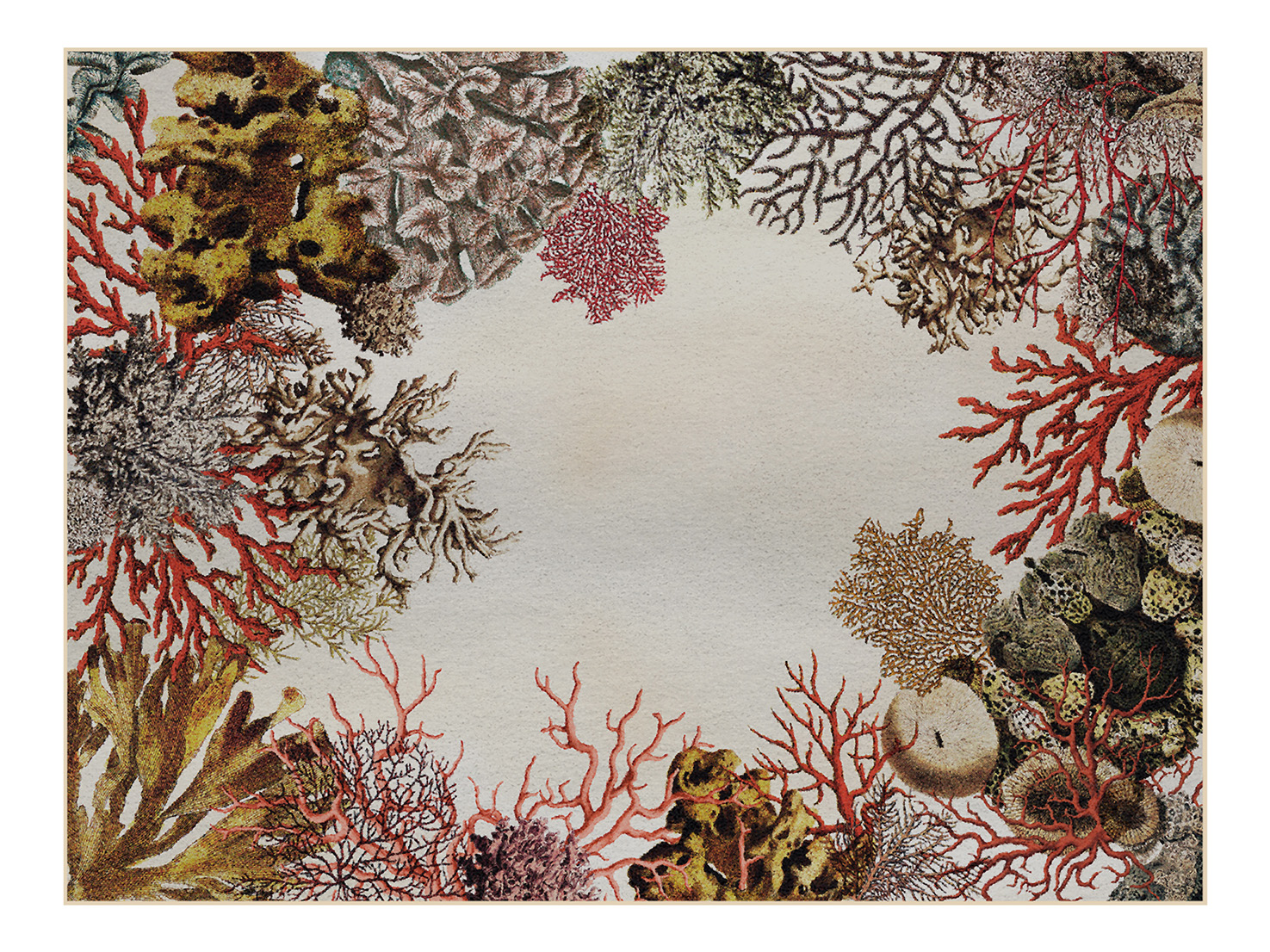
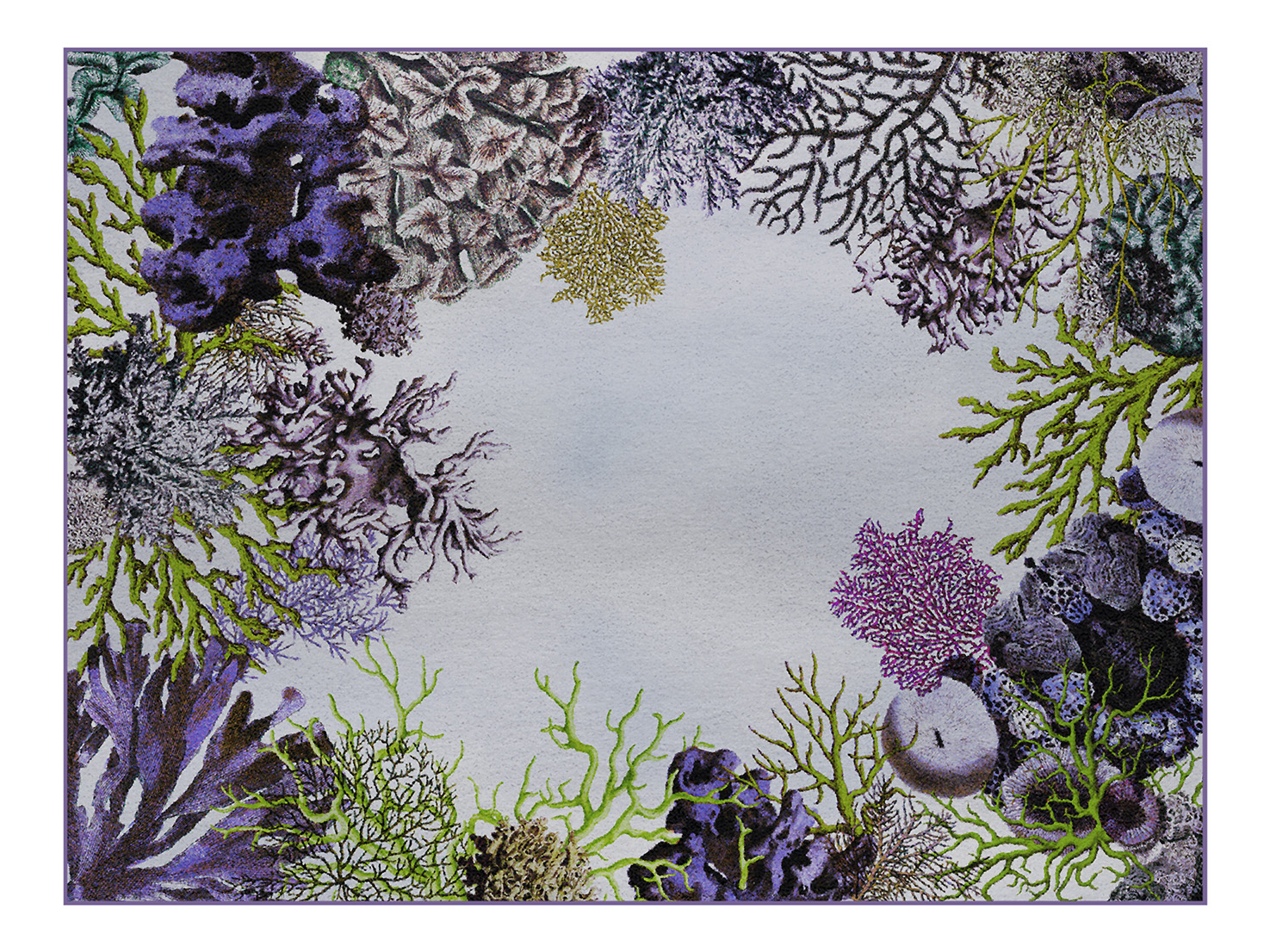
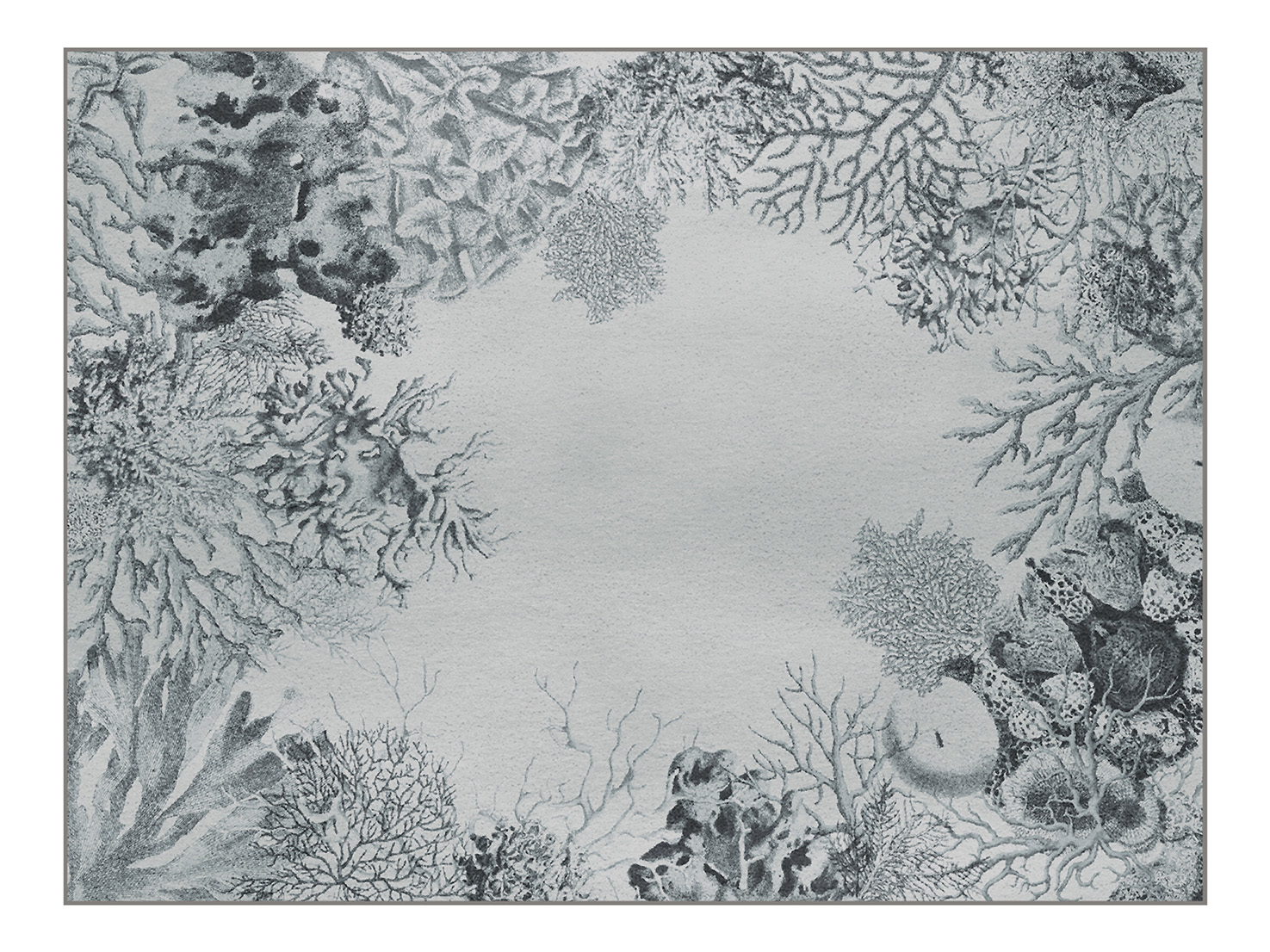
Coral Loss | 2019
A series of carpets that investigates the wonderful nature of corals and their terrible fate. Coral bleaching is a tangible sign of their reaction to some kind of stress, especially when the water temperature rises. Before dying, corals produce vibrantly coloured chemicals that act as sunscreens to protect themselves. This way, they create a range of “glowing” colours that embody these ecosystems’ beautiful death. Discover more on : yo2.io
